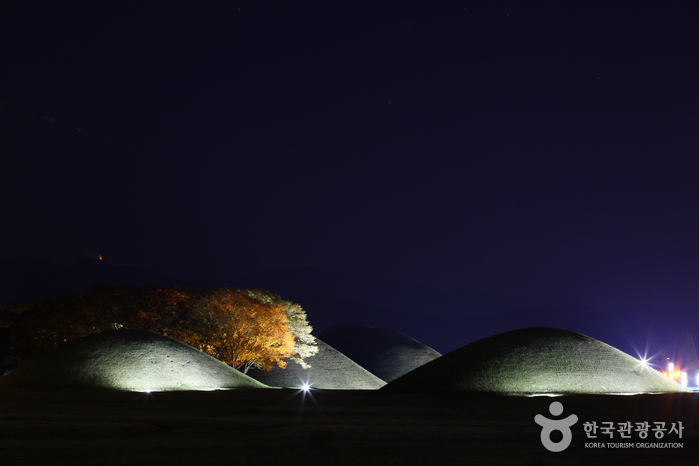Exploring the Gyeongju Royal Tomb of King Naemul
Welcome to the historic Gyeongju Royal Tomb of King Naemul! This ancient burial site holds great significance in the history of South Korea, particularly during the Silla Kingdom. As a tourist destination, this royal tomb offers a unique opportunity to delve into the rich cultural heritage of the region and witness the legacy of King Naemul himself.
A Glimpse into King Naemul’s Reign
King Naemul, the 17th ruler of the Silla Kingdom, ascended to the throne in 356 and reigned until 402. He was a pivotal figure in the history of the kingdom, known for his efforts to promote cultural advancements and strengthen the Silla Kingdom. King Naemul was the first to adopt the king title of ‘Maripgan’ and played a significant role in spreading Chinese influences to the Korean people.
A Symbol of Victory and Unity
One of the most remarkable aspects of King Naemul’s reign was his leadership during a crucial battle against the allied forces of Baekje and Japan. Seeking assistance from Gwanggaeto the Great of Goguryeo, King Naemul led his people to victory, contributing to the increased strength and unity of the Silla Kingdom. This royal tomb stands as a testament to the triumph and resilience of the Silla Kingdom under King Naemul’s rule.
Unveiling the Royal Tomb
The Gyeongju Royal Tomb of King Naemul is an impressive sight to behold. A large mound, measuring 22 meters in diameter and 5.3 meters in height, dominates the northern hill of the Confucian school of Gyeongju. As you approach the tomb, you’ll notice the exposed edge of a natural stone at the bottom of the mound, indicating that the inner chamber tomb was constructed using stone.
A Historical Location
While the historical document Samguk Sagi does not provide detailed records about the tomb, the Samguk Yusa, also known as the Memorabilia of the Three Kingdoms, gives us valuable insights. According to the Samguk Yusa, the king’s tomb is believed to be situated in the southwest of Cheomseongdae, which aligns perfectly with the location of the Gyeongju Royal Tomb of King Naemul. This adds to the historical significance and authenticity of this tourist destination.
How to Get There
To visit the Gyeongju Royal Tomb of King Naemul, you can take Bus No. 70 from the Gyeongju Express Bus Terminal. Once you reach Cheomseongdae Bus Stop, it’s just a short 10-minute walk to the tomb. The convenient bus route ensures easy access for tourists, making it a must-visit location during your exploration of Gyeongju’s historical treasures.
As you venture into the Gyeongju Royal Tomb of King Naemul, be prepared to immerse yourself in a world of ancient history and cultural significance. This iconic site allows you to connect with the glorious past of the Silla Kingdom, offering a unique glimpse into the life and legacy of King Naemul.

